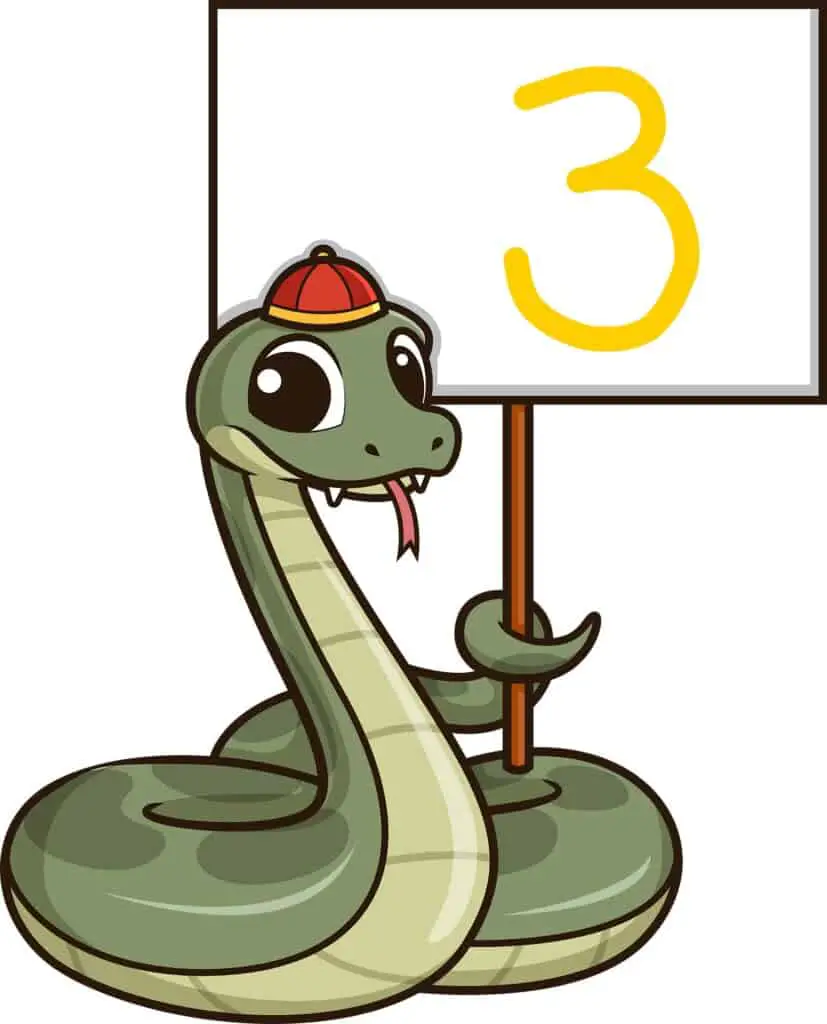
Learning to speak Spanish is not only a smart way to expand your horizons but can also be really helpful in today’s world. There are increasing numbers of Spanish speakers in the United States, and those who are learning to speak Spanish is one way to bridge the gap between two cultures. It’s also a great way to prepare for a trip overseas.
The task may seem daunting, but you can absolutely learn Spanish in three months. Here’s how:
- Practice every day
- Use a combination of audio and written tools
- Speak the language aloud from day one
- Immerse yourself in the language as much as possible
The following guide includes everything you need to know to learn Spanish in three months. We will provide our recommendations for how to divide the process into sections for easier consumption. We will also provide some recommendations for tools you can use to help you along the way.
Contents
Four Key Elements to Success

If you want to take on the challenge of learning Spanish in three months, you’re going to need a roadmap on how to get there. Here are four key things that you must do to set yourself up for success:
- Identify Your Motivation
- Set Goals
- Build a Plan
- Follow the Plan
Those are pretty broad topics. Let’s break them down to make it easier to implement a plan.
Identify Your Motivation
What’s your reason for learning Spanish?
- Are you planning to travel abroad?
- Do you want to be able to communicate with some Spanish speaking friends?
- Do you need this language skill for work or school?
Whatever your motivation, it’s important to acknowledge it, write it down, and keep it at the forefront of your mind. Learning a new language can be difficult or even frustrating at times. Just like anything worth doing, it will take some time and dedication, but your hard work will pay off in the end.
To read more about motivation and language learning, I’ve written in detail here.
Set Goals
If you’re serious about learning Spanish, you need to set an overall goal for yourself. You can then break that goal into smaller benchmarks to hit along the way. This makes the task seem less intimidating because the small steps along the way are attainable.
For example, if your goal is to learn Spanish in three months, you might have smaller goals along the way pertaining to:
- Vocabulary
- Forming sentences
- Having conversations with Spanish speakers
The smaller goals will help you achieve the larger ones and will keep you focused. Many people set out to learn Spanish but do not follow this critical step and often give up early in the process because it seems overwhelming. A secondary piece to the goal-setting puzzle will be to add specific timeframes for each goal.
SMART Goals
Have you ever heard of SMART goals? They are basically goals that include a timeline and are measurable. The letters in the SMART acronym stand for:
- Specific
- Measurable
- Attainable
- Realistic
- Time-based
Later in this article, we will build a plan to get you speaking Spanish in three months. Try to make each step of the plan a SMART goal, which means it needs a deadline. The other pieces of the SMART goal framework may or may not be applicable in your personal plan, but the time-based element is critical to your success.
If you’d like to read more about SMART goals and language learning, I’ve included it in another article here.
Build a Plan

Building a plan that will help you reach your goals is the next step in this process. After all, a goal without a plan is pretty useless. Let’s start with how to build a plan and what should be included.
If you’re going to build a successful plan for learning Spanish, start with the goals that you already set for yourself. Let’s assume your goals are as follows:
- Learn to speak conversational Spanish in three months:
- Learn some basic vocabulary that pertains to your motivation for learning Spanish
- Learn the most common verbs and how to use them
- Work on forming sentences and phrases
- Practice your skills with a native (or fluent) Spanish speaker
These goals are helpful to visualize where you’re going, but they won’t get you from point A to point B. You have to plan the work in between the goals so you can reach them. One of the best ways to do that is by setting timeframes during which you will hit each goal.
Scheduled Sessions
If you’ve ever heard anyone tell you to “put it on your calendar so you’ll actually do it,” they’re not kidding. This is something that will be important to keep you on task. You need to schedule dedicated time for working on your skills. You also need to make your family, roommates, or others in your life aware of these goals and ask them to respect your learning times.
Your time blocks should be scheduled daily. Plan to dedicate at least 30 minutes per day toward learning Spanish. If you have more time to spend, that’s great, but aim for a minimum of 30 minutes per day.
It may seem silly in today’s techno-focused world, but for many, it helps to actually write things down. Using a date book such as this popular one on Amazon could really be the thing that keeps you sticking to a schedule!
Follow Your Plan
For obvious reasons, this is a really important piece of the puzzle. This is where all of your preparation culminates into success or failure. It’s time to revisit your original motivation and keep checking in with it along the way.
All the perfect planning in the world will go unnoticed if you don’t follow it. We like to say, “plan the work and work the plan.” If you went to all the trouble of building the plan, you should then find a way to follow it!
Later in this article, we will give you some information about various language-learning programs and tools that are available online. Be sure to read that section before building out your personal plan. You will want to include some of those tools into your daily and weekly plan.
How to Build a Lesson Plan to Learn Spanish

Now that you know the basic elements you will need; let’s get to work on your plan. If you’re using a software system for your Spanish lessons, there will likely be a lesson plan included. Look over that plan and add or subtract elements as you see fit.
If you’re not using a formal training program, follow the next steps to create your lesson plan.
Week One
In the first week, focus on some basic vocabulary that will help you have simple conversations with the people around you. If you’re learning Spanish for work, you might need to know different vocabulary words than if you’re learning it for a trip overseas.
For this example, let’s assume you’re preparing for a trip and want to be comfortable getting around in a Spanish speaking country.

Divide your week into seven individual lessons (one per day because you need to practice every day).
- Vocabulary about people: He, She, They, Me, I, etc.
- Vocabulary about directions: Here, There, Where, Close, Far, etc.
- Vocabulary about food: this might be specific to you and what you will order at a restaurant while overseas—I.e. chicken, beef, fish, salad, fruit, milk, beer, wine, etc.
- Introductions: how to introduce yourself and ask someone’s name
- Asking for directions: how to ask for directions to different places
- Review: you should review the previous day’s lessons each day, but at the end of each week, review everything you learned that week. Be sure to schedule extra time on review day so you can cover everything.
Week Two
In the second week, add to your vocabulary, but also start trying to form more sentences. Learning conversational Spanish is not about being grammatically perfect but about being able to communicate with other people. If you’re in a foreign country, think about all the things you will need to be able to say.
- Vocabulary about things: Plane, Train, Hotel, Restaurant, Bathroom, Museum, Theater, etc.
- Asking questions: Review the unit on asking for directions, and add more questions to it
- Vocabulary about money: It’s really important to understand the currency in a foreign country. Be sure to learn the necessary vocabulary about it.
- Asking questions: Learn to ask about the cost of different things, the time of day, time of bus schedules, and time of shows you might want to see.
- Have a conversation with a Spanish speaker. If you have a friend or colleague who speaks Spanish, that’s great! If not, there are plenty of online tutors available.
- Review your conversation from the previous day and practice things that were difficult for you.
- Review everything you learned this week. Be sure to schedule extra time today so you can cover everything.
Week Three

In week three, we will focus on making phrases and sentences. Although it’s great to learn the basic vocabulary you will need for the things you want to say, actually speaking the language is much more important. These lessons will focus on speaking the language as much as possible.
- Introductions and small talk – practice speaking to other Spanish speakers (real or imaginary) and getting to know them a little bit
- Asking for directions to various places – practice asking where certain things are in the city or town that you will be visiting.
- Ordering meals at restaurants – practice ordering food and drinks.
- Purchasing goods, services, and tickets – practice asking how much things cost and how to respond.
- Asking questions about the city, town, or country – you will undoubtedly be interested in learning some history of the places you visit.
- Have a conversation with a Spanish speaker about the country you will be visiting. Introduce yourself and ask them lots of questions.
- Review the lessons from the week. Practice saying everything aloud and working on things that were difficult for you.
Continue building out your plan for the full twelve weeks. It may seem like a cumbersome task, but it will really help you focus on the things that will be necessary for your success. Be sure to consider your preferred way of learning, whether audible, written, or other, although you will need practice in all domains of learning.
You may find that videos, online tutors, and other such tools are more helpful than textbooks. Be sure to incorporate those into your learning plan. Interactive tools are a highly effective way to learn a language.
Tools and Programs to Consider
With so many tools available on the market, it can be difficult to decide which ones will help and which ones to avoid. There are different schools of thought in this realm, but we can give you some basic information about some of them. They also vary substantially in cost, so your personal budget should be a consideration, as well.
Remember that learning to speak Spanish is a completely new skill, especially if the only language you’ve ever spoken is English. Latin-based languages such as Spanish are extremely different in structure and grammar than English. That’s why it’s so important to focus on actually speaking aloud rather than getting into the details of verb conjugation.
Programs You Can Use to Help You Learn
Let’s dig into some of the programs that are available and how they are structured.
Pimsleur
The Pimsleur method is one of many language learning programs on the market. It is based on the theory that language should be learned in spoken form instead of written or otherwise. It was developed by Dr. Paul Pimsleur, who spent his life studying languages and psychology and how the human brain learns language.
This method is comprised of only audio lessons that can be played on any device, including smartphones and tablets. Each lesson is about thirty minutes long and should be followed in strict consecutive order. In other words, you shouldn’t skip around from lesson to lesson when using this method of learning.
The Pimsleur program requires that you complete one lesson per day, but no more. You can repeat the same lesson multiple times in one day, but you should not advance to the next. Each lesson includes both new and familiar material to help you review things you’ve already learned while adding new ones to your repertoire.
Rosetta Stone
This is perhaps the most well-known language program on the market today. Rosetta Stone has done a fantastic job with advertising their products and most people know the name immediately. If you’re interested in formal training in Spanish, this is a good choice for you.
Rosetta Stone follows the traditional style of teaching, which includes:
- Memorizing vocabulary
- Practicing grammar
- Conjugating verbs
- Reading
- Writing
- Speaking aloud
It also includes an app that you can download for audio lessons and other tools. The app even includes a speech recognition tool that can listen to your accent and provide feedback! Having all of your lessons on the app allows you to practice your Spanish while you’re on the go, unlike a textbook program that would require you to sit at a desk with pen and paper.
Another cool feature of the Rosetta Stone program is their Dynamic Immersion platform. This is based on the idea that you must be fully immersed in a language to learn it. Their Dynamic Immersion portion of the program includes video, audio, and written lessons that help surround you in the language and keep you progressing.
Baselang
This is a less well-known program, but still a highly effective one. Baselang features two distinct courses to choose from, based on your time constraints, goals, and budget. It has a “Grammarless” program that guarantees you will be speaking in 30 days, but it requires four hours of study per day, five days per week.
In keeping with the goal of learning Spanish in three months, we will instead focus on the Baselang “Real World” program. With this program, you get unlimited one-on-one Spanish lessons with tutors from all over the world. It is self-paced so that you can schedule your learning process around work, school, and other obligations.
Like the other two programs we’ve discussed, Baselang highly suggests that you practice every day for the best results. Having contact with the language every day is the only way to learn it the way a native speaker would. The program includes online activities, tutoring sessions, and other tools to help you learn at your own pace.
Tools
Tools are different than programs because they are a small piece of your larger plan. These are things like YoutTube channels and other online learning resources. Here are a few of our favorites:
Duolingo
This is a really fun website that includes all sorts of interactive games to help you retain the information you’re learning. Duolingo is free to register and is great for children or adults. It includes gamification, so if you’re not into games, it might not work for you.
Boom Cards
If you prefer something similar to flashcards or other traditional learning styles, check out the boom cards on the World Language Café website. You can sign up for a free online resource library. It’s a great way to practice the skills you’re learning in a fun but less “gamified” way.
The Dialogue Game
Since the majority of the methods discussed in this article highlight the importance of dialogue, this is an excellent way to complement your efforts. The Dialogue Game includes various categories from which to choose what you want to practice. Although it’s not as efficient as speaking aloud or practicing with a Spanish speaker, it’s still a useful tool.
YouTube
As we’re sure you can imagine, there are tons of YouTube channels devoted to teaching people to speak Spanish. Some are better than others, in our opinion, but everyone learns differently. We recommend conducting a YouTube search before each lesson to see if there is something that fits what you’re learning.
We also recommend finding a YouTube channel where a native Spanish speaker teaches the lessons. This will help you pick up on accents and nuances that are important in any language.
Tips and Tricks
To be successful in your endeavor to learn Spanish in three months, you have to be really dedicated to the process. It will be a lot of work, but it will also be tons of fun. Here are some key tips and tricks we’ve picked up along the way that will help you on your journey.
Speak Spanish Aloud Every Day, From the Very Start
It’s easy to let yourself read from the computer screen or listen to Spanish radio or TV without speaking. These are great things because it gets your ear accustomed to hearing the sounds of the language. However, it does not help your tongue or your brain connect when trying to say the words aloud.
Be sure to practice the vocabulary words, questions, and conversations out loud from day one. This is the only way for you to get comfortable making the sounds and saying the words.
Practice Speaking to a Native Spanish Speaker

This can be someone you know, or an online tutor, or even a coach. If you can do this every day, that’s awesome! But the chances are that you will only be able to fit this into your lessons a couple of times per week. Be sure to schedule these sessions in advance and be totally focused when you’re doing them.
Sessions with a native speaker can be done online via Skype, Zoom, Facetime, or other platforms. They can also be done over the phone. Ideally, you want to do them in person, but choose the next best thing if that’s not an option.
Learn Practical Phrases First
In your lesson plans, we deliberately added lessons about specific things you will need to be able to say. Those phrases will differ, depending on the overall goal. In this article, we used travel as the reason for learning to speak Spanish.
Travel requires different practical phrases than you would need to communicate with a co-worker. When you’re just starting out, you’ll be better off learning what you will use the most. You can always add on more skills later.
Books like Amazon’s Spanish Frequency Dictionary can become a great tool to use as you progress in your 3 month study, and beyond.
Don’t Focus on Super Strict Grammar
Learning a new language can be really challenging without the added stress of trying to use perfect grammar. It is less important that your grammar is perfect and more important that you can communicate your message. Consider when someone speaks broken English to you: more often than not, you still understand what they are trying to say, even if their grammar isn’t perfect.
Some traditional language programs will focus heavily on grammar. While that’s not necessarily a bad thing, it can definitely slow down your learning process. Be sure to focus more heavily on spoken words and practicing conversations instead.
Practice Translating Phrases You Write to Spanish
Learning a new language is not only about speaking it. You should also consider learning to write things down and then translate them. This will help with the retention of the lessons, as you will be able to visualize everything you learned that day.
Listen to Spanish Radio and TV Stations
Being fully immersed in a language is what helps you to commit it to memory. Children are surrounded by the sounds of their native language from the moment they are born, which helps them form sounds and eventually words that are the same. The strategy is the same for adults.
The more the sounds of the language surround you, the more you will pick up and be able to say. Our brains are hard-wired to memorize sounds rather than words on a page. That’s why it’s so easy to remember lyrics to a song but not so easy to remember vocabulary words in a book.
Practice, Practice, Practice!

I’m sure you’ve heard the phrase “practice makes perfect.” In this case, it probably won’t make you perfect, but it will make you better. The more you practice your Spanish speaking skills, the more proficient you will become.
Remember that you need to practice aloud, too. Drilling things in your head is not nearly as helpful as saying the words, phrases, and sentences aloud. You also need to practice every single day, even if it’s only for thirty minutes.
Don’t Be a Perfectionist
Perfectionism will quickly put a damper on your learning experience and your overall desire to learn. As we mentioned earlier, the goal is to be able to communicate your message to others. Your grammar will not be perfect right out of the gate, and nor should you expect it to be.
When you’re working with your tutor, Spanish coach, or Spanish speaking friend, just enjoy the conversation. They might give you some corrections along the way, but it should be fun. Let yourself laugh a little bit when you say the wrong word or put them in the wrong order! It’s okay!
The Final Talking Point on How to Learn Spanish In 3 Months
Hopefully, you picked up a few ideas on how to learn Spanish in three months. We are firm believers in building a plan that will help you reach your goal as quickly as possible. But remember, you’ll never get there if you don’t stick to the plan!
We recommend trying a few different tools and programs to find what will work for you. Doing the research on each of them and belaboring the decision can be exhausting. Instead, try several of them and then decide which ones will work for you and which ones won’t. Then, stick to it!
Happy learning!
Additional Sources:
